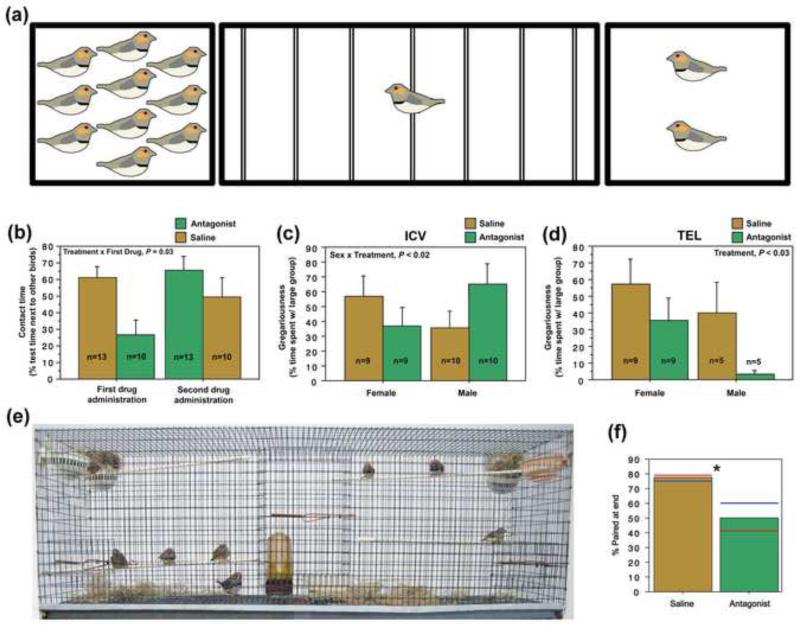Fig. 1.
VPAC antagonism alters social contact in a novel environment, gregariousness and pair bonding in zebra finches. (a) Our choice test apparatus consists of a 1 M wide testing cage subdivided into zones by seven perches with stimulus cages containing either two or ten familiar same-sex conspecifics at either end. The percent of test time spent on the two end perches combined (within 6 cm of a stimulus cage) provides a measure of “social contact time”. The percent of social contact time spent with the large group provides a measure of “gregariousness” (group size preference). (b) Ventricular VPAC antagonist infusions decrease social contact time in the choice apparatus (shown in a) on the first test day when the testing paradigm is novel, but not on the second test day. (c, d) VPAC antagonism has site- and sex-specific effects on gregariousness in choice tests. (c) A significant interaction of Sex and Treatment is observed following ICV antagonist infusions whereby VPAC antagonism tends to decrease gregariousness in females and increase it in males. (d) A main effect of Treatment is observed following VPAC antagonist infusions into the telecephalon whereby VPAC antagonism reduces gregariousness in both males and females. (a-d), modified from [36]. (e) A 1 M wide cage showing the standard setup for colony observations, with a single nest cup in each of the 4 corners, and a food dish, water sipper and burlap nesting material placed on the cage floor. Modified from Kelly and Goodson [41]. (f) Chronic VPAC receptor antagonism significantly decreases the percentage of zebra finches that are paired in the final behavioral session, as compared to control animals. Blue bars denote male values and red bars denote female values. Modified from [45].

